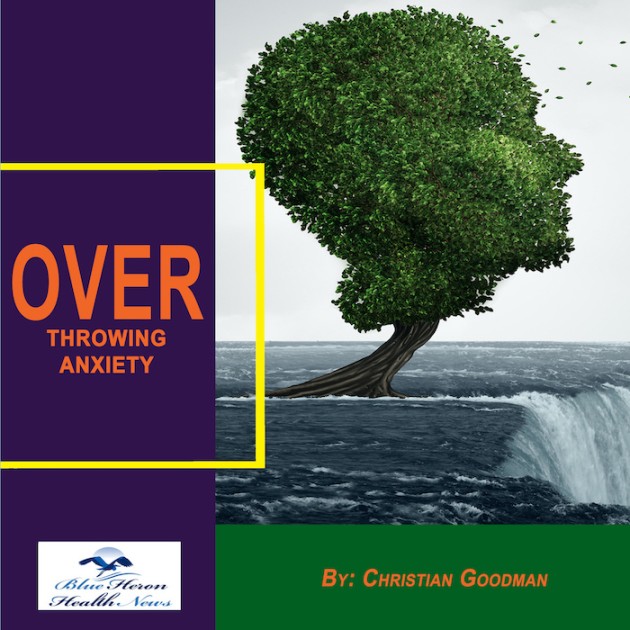
Overthrowing Anxiety™ This eBook includes a complete program to treat anxiety effectively. It guides you to learn the ways to find, understand, and accept the main cause of your anxiety and start using the techniques provided in it to treat the problem.
How does exposure therapy work for anxiety?
Exposure therapy is a very effective treatment for anxiety disorders, especially for phobias, PTSD, obsessive-compulsive disorder (OCD), and social anxiety. The key concept behind exposure therapy is that the anxiety can be reduced over time by facing the feared situation in a gradual and controlled fashion.
Below is a detailed explanation of how exposure therapy is done:
???? 1. Understanding the Fear Response
Anxiety typically arises from an exaggeration of fear in reaction to a specific situation or stimulus (e.g., spiders, social interactions, or public speaking). The more the stimuli are avoided, the more fear develops over time because the brain associates the feared stimulus with greater anxiety.
Exposure therapy is obtained by gradually confronting the feared object or situation in a safe environment, thus separating the fear from the stimulus.
???? 2. Gradual Exposure (Systematic Desensitization)
In gradual exposure, or systematic desensitization, the person is gradually exposed to the scary situation, starting with less anxiety-provoking items and working toward increasing difficulties of exposure.
For instance, a socially anxious person could start by looking at pictures of people, progress to sitting and observing people in public, strike up conversations with strangers, and eventually go to a big social event.
Relaxation training (e.g., deep breathing) is often utilized when performing these exposures to help reduce physiological reactions of anxiety. This enables the individual to become relaxed while in the presence of feared stimuli.
???? 3. Full Exposure (Flooding)
In flooding, the person is put into the most danger state straight away (e.g., being in a crowded place for a person with social anxiety). The objective is to overload the anxiety in a controlled manner so that the brain gets persuaded that the dreaded state is not as dangerous as originally supposed.
This technique is more extreme and is typically used with more extreme phobias or anxiety conditions.
???? 4. Habituation Process
Over time, the fight-or-flight response of the body diminishes due to repeated exposure to the feared stimulus as a process known as habituation occurs, where the emotional response to the stimulus diminishes with repeated exposure.
For instance, by repeated exposure to a feared setting, the fight-or-flight response of the body decreases. The person learns that the feared setting is not as threatening as the anxiety initially convinced them.
This reduces overall anxiety levels and enhances self-esteem in managing anxious feelings.
???? 5. Cognitive Restructuring
Exposure therapy may involve a cognitive restructuring element, in which the therapist helps the individual to confront illogical or skewed cognitions related to the fear stimulus.
For example, an individual with public speaking fear may believe that others will harshly criticize them if they make a mistake. Exposure therapy helps in overcoming such a fear and understanding that most people are forgiving and understanding even when errors are made.
It can help in redirecting such negative thoughts and affirm that the phobia is not based on reality.
???? 6. In Vivo vs. Imaginal Exposure
In Vivo Exposure: It is real exposure to the situation being avoided. As an example, a person with elevator phobia may start by riding an elevator with a therapist accompanying them.
Imaginal Exposure: When it is not possible to confront the feared situation immediately, the individual is requested to imagine vividly the feared situation and explain their emotions. This form of exposure is mostly employed when the fear happens to be that of trauma, as in the case of PTSD.
???? 7. The Role of Gradual Progression
The goal of exposure therapy is gradual desensitization. The person is gradually exposed to increasingly stronger aspects of the feared situation at a comfortable but challenging rate enough to provoke anxiety. This is accomplished so the person can learn to tolerate discomfort and develop coping skills.
For example, someone afraid of dogs will initially observe a dog at a distance. Gradually, they would move to stroking one. Gradual progression gives the subject a feeling of achievement, easing anxiety at each step.
???? 8. The Therapist’s Role
A therapist provides support, direction, and oversight in the exposure process. They help the individual remain safe, calm, and focused while making sure the exposure is done gradually and safely.
The therapist helps the individual dispute any irrational thoughts or negative self-statements that arise during exposure.
???? 9. Establishing Long-Term Coping Skills
The ultimate goal of exposure therapy is not just to reduce fear but also to equip the individual with coping mechanisms for managing anxiety in the long term.
It could involve the capability to learn how to manage the symptoms of anxiety between sessions through the practice of exercises like breathing, grounding techniques, or mindfulness.
???? 10. Success Rate and Effectiveness
Exposure therapy has been found to be highly effective for the majority of types of anxiety disorders, such as:
Phobias (fear of spiders, flying, etc.)
Social anxiety disorder
Panic disorder
Post-traumatic stress disorder (PTSD)
Obsessive-compulsive disorder (OCD)
Overview of Significant Steps in Exposure Therapy:
Identify the feared situation.
Expose the person to the situation gradually (starting with less terror-provoking aspects and progressing).
Relaxation exercise to deal with physical anxiety responses.
Cognitive restructuring to deal with irrational thoughts.
Establish coping skills for long-term anxiety management.
Conclusion
Exposure therapy is based on the belief that exposure to feared stimuli in a controlled, gradual way can reduce anxiety by allowing habituation and challenging irrational thinking. Over time, individuals become better able to control their anxiety and become resilient to stressors that had before felt insurmountable.
Would you rather learn how to start exposure therapy or how it might be applied to a specific type of anxiety (e.g., social anxiety or phobias)?
Anxiety and depression are closely related mental illnesses, and they have a tendency to co-occur, with one sometimes causing or exacerbating the other. Though they vary in their symptoms and diagnosis, there are many similarities and overlaps between them. Here’s how they are related:
1. Shared Symptoms
Emotional symptoms: Both anxiety and depression can consist of persistent sadness, worry, and irritability. Both groups of people often feel hopeless, helpless, or numb emotionally.
Physical symptoms: Both disorders can cause fatigue, sleep dysfunction (insomnia or hypersomnia), and appetite or weight loss. They can also cause physical symptoms such as headaches, muscle tension, and stomach distress.
Cognitive symptoms: Depression and anxiety can both weaken concentration, making it hard to focus, make decisions, or even think logically.
2. Co-occurrence
Anxiety and depression co-occur in the majority of cases. The vast majority of anxious people have depression and vice versa. In studies, it is estimated that up to 60% of those suffering from depression go on to develop an anxiety disorder. Crossover is so high that the two have come to be referred to as comorbid disorders.
People who have Generalized Anxiety Disorder (GAD) or Panic Disorder are more likely to develop depression. Similarly, individuals with major depressive disorder (MDD) are more likely to develop anxiety disorders.
3. Impact Upon Each Other
Anxiety and depression: Anxiety that is prolonged, particularly if left unattended, can escalate into helplessness, frustration, and fatigue, ultimately leading to depression. The worry and fear become an emotional and physical drain, resulting in a sense of hopelessness that is characteristic of depression.
Depression leading to anxiety: Depression may also lead to anxiety. If a person is stuck in negative thoughts or thinks nothing will ever change, this may lead to worry in the future, in social interactions, or about life in general. Additionally, anhedonia (loss of interest in activities) and worthlessness may further increase fear and apprehension.
4. Common Underlying Causes
Biological causes: Depressive symptoms can be triggered by or influence by the same biological causes of depression and anxiety such as the chemistry of brain alteration, genes, and endocrine imbalance. Examples include altered states of neurotransmitter chemicals in forms of imbalances of serotonin, dopamine, and norepinephrine chemicals.
Stress response: Chronic stress, traumatic event, or a stressful situation (such as loss, money worry, or marital issues) can trigger depression as well as anxiety. Stressors may induce overactivation of the body’s stress response system, which decreases the ability to control emotions and mood, hence susceptibility to the development of either or both the disorders.
Cognitive styles: Both anxious and depressed individuals are prone to showing negative thought styles and cognitive distortions. For example, they may employ catastrophic thinking, anticipating the worst-case situation, or rumination, in which they constantly think about negative things and past mistakes.
5. Similar Treatment Styles
Cognitive Behavioral Therapy (CBT): CBT works well for depression and anxiety because it allows individuals to recognize and overcome negative thinking styles and behaviors. Patients can learn coping skills for managing both diseases with CBT.
Medication: Certain medications, such as selective serotonin reuptake inhibitors (SSRIs) and serotonin-norepinephrine reuptake inhibitors (SNRIs), are used to treat depression and anxiety. These medications work by increasing the amount of neurotransmitters in the brain that regulate mood and stress response.
Lifestyle changes: Exercise regularly, maintain a healthy diet, and practice stress-reduction techniques (such as mindfulness, meditation, or relaxation techniques) to minimize symptoms of both depression and anxiety.
6. The Cycle of Anxiety and Depression
Anxiety and depression feed into one another. For example, anxiety about social interactions may cause avoidance, which may result in isolation and loneliness, leading to depression. Depression may result in a lack of motivation to perform activities, which may increase anxiety about not being productive or fulfilled.
7. Differentiating Between the Two
Even though depression and anxiety can appear at the same time, let’s distinguish the two:
Anxiety is often marked by excess worrying, fearful or nervous concerns about what might be in the future, along with physical problems such as heightened heart rate, sweating, and breathing problems.
Depression is typically marked by enduring feelings of sadness, hopelessness, or a loss of pleasure in things once enjoyed, coupled with worthless or guilty thoughts.
Even though they share identical symptoms and etiology, they must be differentiated from each other to identify them and administer correct treatment.
Summary
Depression and anxiety are both interrelated having identical symptoms, causes, and the capability of enhancing each other. It’s quite possible that one can undergo both simultaneously. However, there should be a knowledge of how they relate and tackle both of them together using therapy, medications, and changing their lifestyle appropriately for good management of mental well-being.
Would you prefer more information about the simultaneous management of both anxiety and depression, or treatment techniques?
Overthrowing Anxiety™ This eBook includes a complete program to treat anxiety effectively. It guides you to learn the ways to find, understand, and accept the main cause of your anxiety and start using the techniques provided in it to treat the problem.
